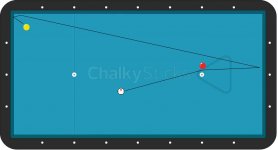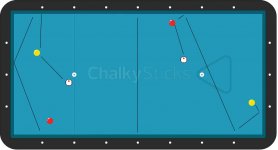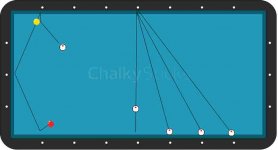Hard for me to find the words for this question but gotta start somewhere.
While under quarantine I'm on my 3C table more than ever which is a good thing.
A large percentage of my shots I'm clocking the CB and now trying to expand on that knowledge trying to get more precision beyond 1/2Ball and thin hits sending the CB perpendicular to a rail.
I'm wondering if there's been any study on what's added or subtracted to the CB with outside or inside English with 1/8 or 1/4 or .... hits.
I'm finding there's a considerable amount of interaction. I know the reason but can't get a handle on the rhyme. When do things change, For instance with inside English and shooting directly perpendicular to a rail into a ball where is the change from taking the spin or the CB English reversing?
Sorry if this doesn't clear enough.
While under quarantine I'm on my 3C table more than ever which is a good thing.
A large percentage of my shots I'm clocking the CB and now trying to expand on that knowledge trying to get more precision beyond 1/2Ball and thin hits sending the CB perpendicular to a rail.
I'm wondering if there's been any study on what's added or subtracted to the CB with outside or inside English with 1/8 or 1/4 or .... hits.
I'm finding there's a considerable amount of interaction. I know the reason but can't get a handle on the rhyme. When do things change, For instance with inside English and shooting directly perpendicular to a rail into a ball where is the change from taking the spin or the CB English reversing?
Sorry if this doesn't clear enough.
![CropperCapture[512].png CropperCapture[512].png](https://forums.azbilliards.com/data/attachments/403/403956-fdf332f464f3cecde6830cbc1b0f7a64.jpg)




